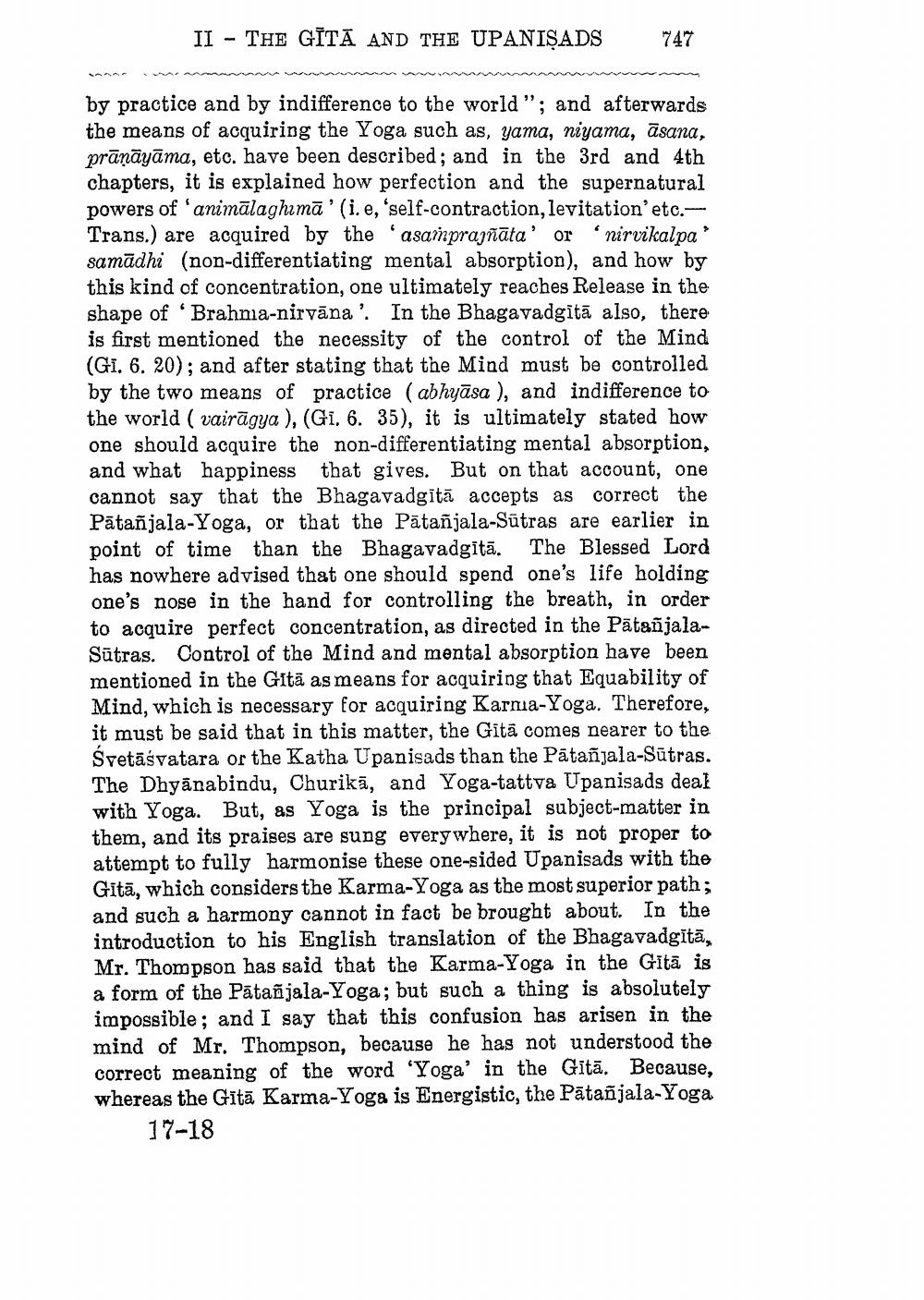________________
II - THE GĪTĀ. AND THE UPANIŞADS
747
by practice and by indifference to the world"; and afterwards the means of acquiring the Yoga such as, yama, niyama, āsana, prānāyāma, etc. have been described, and in the 3rd and 4th chapters, it is explained how perfection and the supernatural powers of 'animālaghımā'(i. e, 'self-contraction, levitation' etc.Trans.) are acquired by the 'asamprajñāta' ornirvikalpa samādhi (non-differentiating mental absorption), and how by this kind of concentration, one ultimately reaches Release in the shape of 'Brahma-nirvāna'. In the Bhagavadgitā also, there is first mentioned the necessity of the control of the Mind (GI. 6. 20); and after stating that the Mind must be controlled by the two means of practice (abhyāsa ), and indifference to the world ( vairāgya ), (Gi. 6. 35), it is ultimately stated how one should acquire the non-differentiating mental absorption, and what happiness that gives. But on that account, one cannot say that the Bhagavadgitā accepts as correct the Pātañjala-Yoga, or that the Patañjala-Sutras are earlier in point of time than the Bhagavadgitā. The Blessed Lord has nowhere advised that one should spend one's life holding one's nose in the hand for controlling the breath, in order to acquire perfect concentration, as directed in the PātañjalaSūtras. Control of the Mind and mental absorption have been mentioned in the Gitā as means for acquiring that Equability of Mind, which is necessary for acquiring Karnia-Yoga. Therefore, it must be said that in this matter, the Gità comes nearer to the Svetāśvatara or the Katha Upanisads than the Pātañjala-Sūtras. The Dhyānabindu, Churikā, and Yoga-tattva Upanisads deal with Yoga. But, as Yoga is the principal subject-matter in them, and its praises are sung everywhere, it is not proper to attempt to fully harmonise these one-sided Upanisads with the Gītā, which considers the Karma-Yoga as the most superior path; and such a harmony cannot in fact be brought about. In the introduction to his English translation of the Bhagavadgitā, Mr. Thompson has said that the Karma-Yoga in the Gitā is a form of the Pātañjala-Yoga; but such a thing is absolutely impossible; and I say that this confusion has arisen in the mind of Mr. Thompson, because he has not understood the correct meaning of the word 'Yoga' in the Gītā. Because. whereas the Gītā Karma-Yoga is Energistic, the Pātañjala-Yoga
17-18




